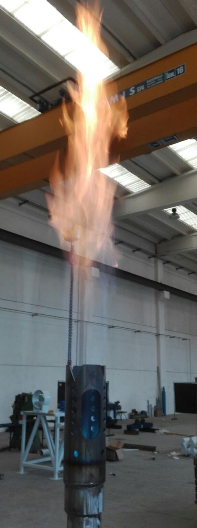There are several types of support methods for elevated flares.
TCD Italia optimizes the structural impact by careful consideration of all relevant factors as a first step to an economic final solution.
TCD Italia has the experience to propose any type of flare supporting structure and it is in a position to provide the structural and mechanical design, fabrication, trial assembly and erection.
Design is in accordance with all worldwide current used codes employing advanced finite elements and dynamic simulation techniques.
The types of structures are:
- Self-supported
- Guyed
- Derrick
- Guyed constant derrick
A thorough evaluation of the specific needs will ensure that economic and operational considerations are fully taken into account before one comes to a decision.
SUPPORTING STRUCTURES
SELF-SUPPORTED FLARE
A mechanically and structurally designed stack supports the flare tip without any extra support.
With high flaring rates it is possible to achieve very cost effective designs because riser diameters approach the larger dimensions required for structural stability.
This type of support is usually required when space is not available for other type of supporting structure. Usually the top flare elevation with type of structure is limited to 70 m high.
TCD Italia can offer “variable section diameter” support stacks. The lower portion of the self-supported flare can be occasionally adapted as an integral Liquid Seal and/or Knock-Out Drum.
For short flares a self-supported flare will probably involve the smallest capital cost and be fairly easy to erect and maintain.
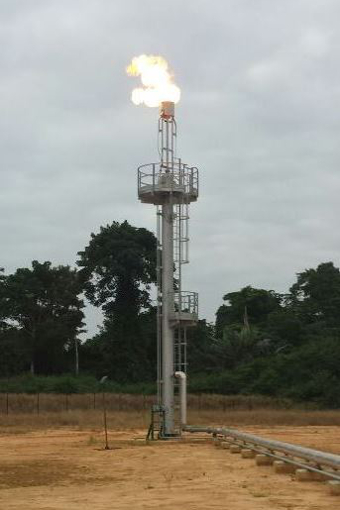
GUYED-SUPPORTED FLARE
This type of support represents the lightest and cheapest option. It can be used when space and plant layout are large enough to accommodate the guy ropes anchor points at grade. Three deadmen usually anchor up to fire ropes from the flare stack. Flare riser diameters are usually governed by the flaring gas process requirements.
However, careful consideration of vibration behavior is necessary as well as flaring gas temperature that can produce significant expansion of the stack. Usually flaring gas over 250°C prevents the use of guyed structures.
It is realistic also to say that over 150 m flare elevation the guyed flare structure is not a practical design. To reduce maintenance problems wire rope cores should be used rather than fibre cores and ropes and fittings are hot dip galvanized.
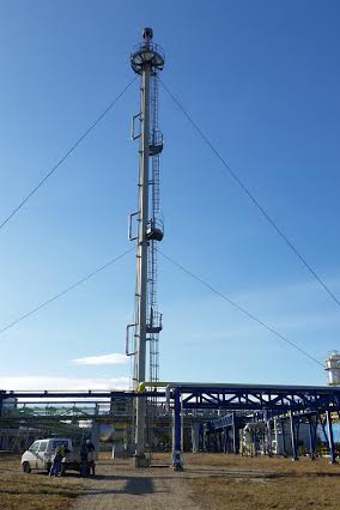
GUYED CONSTANT DERRICK-SUPPORTED FLARE
This type of support is a good technical and cost compromise when high value of gas temperature could produce significant expansion of the riser and the setting of guy ropes supporting system will represent a problem.
Under these circumstances a constant derrick structure (triangle or square shape) is a widely used method.
The flare riser(s) is / are located within the constant derrick so that it is free to move and to expand as well as ladders and platforms and service piping. The constant derrick (not the flare riser) would be supported by guy-ropes at different elevation. The main columns of the constant derrick are in tubular carbon steel pipes, cross member can be in tubular or open profile. The constant derrick modules will not exceed 12 m flanged length and all elements are bolted individually. A full hot dip galvanization will ensure complete corrosion protection.
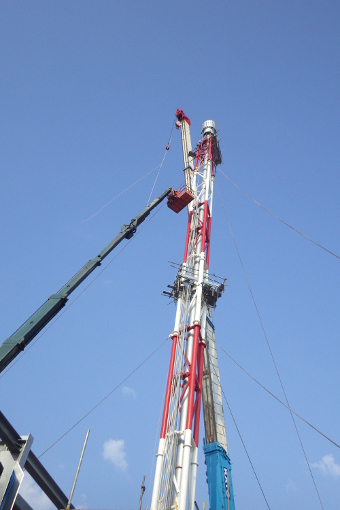
DERRICK-SUPPORTED FLARE
The derrick-supported structure is used for very tall systems where the use of a guy wire is not allowed due to space and erection problems. The flare riser is housed within and supported by a braced framework. The flare burner can be maintained by lowering it by a davit or a crane. The derrick structure allows the installation of several flares together. Derricks can have square or triangle shape and they can be fabricated from tubular carbon steel or open profile or a mix of them. All members (main columns, cross bracing) are usually of all bolted construction and supplied in 12 m max. length. All derrick and riser components will be hard stamped by individual mark and easily identified by the erection drawings. The derrick will be trial-assembled at workshop’s and usually hot dip galvanized in order to ensure complete corrosion protection. The derrick is so designed that erection can be accomplished in approximately 12 m sections. The structure is flexible in style to suit erection needs and it may be erected piecemeal where only limited craneage is available.
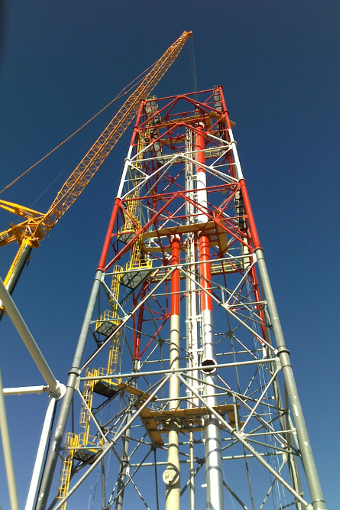
BURN PIT
The main use of a burn pit is to dispose of liquid or mixed liquid-vapours relieves as emergency flows or on an intermittent basis when blowing down pipelines or vessels.
The pit is simply a shallow depression or hole in the ground which acts as a reservoir for the waste liquid.
Burn pits may be manufactured with concrete and/or refractory bricks lining. Very large burn pits are frequently left as a natural excavation and surrounded by an earth or rock bund wall.
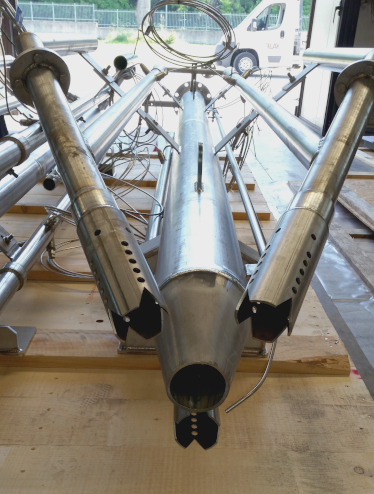
IGNITION SYSTEMS & PILOTS
FLARE PILOT SYSTEM
Flare ignition failure is one of the worst nightmares an onshore or offshore petroleum/petrochemical plant can experience. Unburned hydrocarbon gases vented to atmosphere may cause an explosive hazard leading to loss of equipment and injury to people.
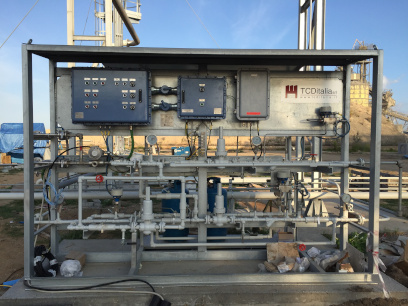
IGNITION SYSTEMS
TCD Italia has the complete range of ignition system designed for manual or automatic operation or a combination of both.
These systems are able to ignite the TCD Italia flare burner pilots from remote location (over 800 m from flare) and they can be identified as follows:
- Conventional Flame Front Generator – FFG
- High Energy Ignition – HE
PILOT BURNERS
The TCD Italia flare pilots are suitable to be lit via a traditional FFG (Flame Front Generator) system and/or via a HE (High Energy) electronic system.
It is well known that safety of flaring depends on the performance of flare pilots. As flare pilot failure can compromise safety and performance of the entire flare system, it is extremely important to detect the pilot flame quickly and accurately.
These reasons make the pilot ignition system and pilot flame monitoring one of the crucial component of any flare system.
TCD Italia has developed a wide range of tested and proven flare pilots system suitable to satisfy all flaring scenarios even in extreme weather conditions.
ACCESSORIES
